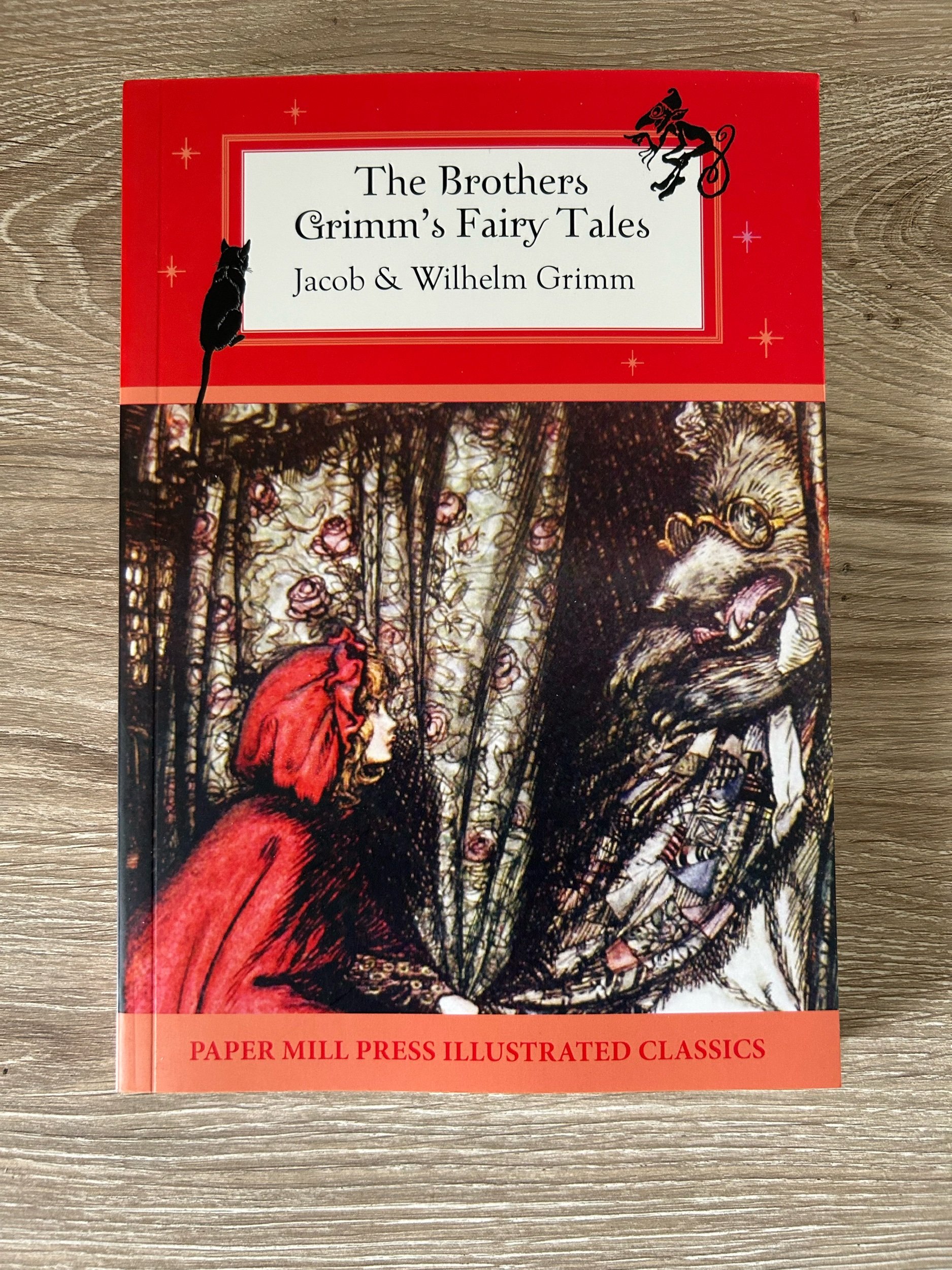The Brothers Grimm’s Fairy Tales- Jacob& Wilhelm Grimm
For most children, reading the fairy tales of the Brothers Grimm is an essential experience; but when these stories were first collected, fairy tales were considered entertainment for adults as well. This edition of Grimm's Fairy Tales brings together the best-known fairy and folk tales set down by the Brothers Grimm, including "Sleeping Beauty," "Snow-White and the Seven Dwarfs," "Little Red Riding Hood," "Hansel and Gretel," "The Frog-King," and "Rumpelstiltskin," in a package aimed at readers returning to the beloved stories of their youth.
First published in 1812, Grimm's Fairy Tales was compiled by Jacob and Wilhelm Grimm to preserve German folklore and impart moral lessons through enchanting narratives. The stories often feature themes of justice, retribution, and the triumph of the downtrodden. In contemporary culture, Grimm’s tales continue to influence literature, film, and theater, reflecting the ongoing human struggle with dark themes such as greed, deceit, and cruelty. The tales’ relevance persists as they explore the complexities of human nature and societal issues, offering cautionary insights that apply to modern social and personal dilemmas
For most children, reading the fairy tales of the Brothers Grimm is an essential experience; but when these stories were first collected, fairy tales were considered entertainment for adults as well. This edition of Grimm's Fairy Tales brings together the best-known fairy and folk tales set down by the Brothers Grimm, including "Sleeping Beauty," "Snow-White and the Seven Dwarfs," "Little Red Riding Hood," "Hansel and Gretel," "The Frog-King," and "Rumpelstiltskin," in a package aimed at readers returning to the beloved stories of their youth.
First published in 1812, Grimm's Fairy Tales was compiled by Jacob and Wilhelm Grimm to preserve German folklore and impart moral lessons through enchanting narratives. The stories often feature themes of justice, retribution, and the triumph of the downtrodden. In contemporary culture, Grimm’s tales continue to influence literature, film, and theater, reflecting the ongoing human struggle with dark themes such as greed, deceit, and cruelty. The tales’ relevance persists as they explore the complexities of human nature and societal issues, offering cautionary insights that apply to modern social and personal dilemmas
For most children, reading the fairy tales of the Brothers Grimm is an essential experience; but when these stories were first collected, fairy tales were considered entertainment for adults as well. This edition of Grimm's Fairy Tales brings together the best-known fairy and folk tales set down by the Brothers Grimm, including "Sleeping Beauty," "Snow-White and the Seven Dwarfs," "Little Red Riding Hood," "Hansel and Gretel," "The Frog-King," and "Rumpelstiltskin," in a package aimed at readers returning to the beloved stories of their youth.
First published in 1812, Grimm's Fairy Tales was compiled by Jacob and Wilhelm Grimm to preserve German folklore and impart moral lessons through enchanting narratives. The stories often feature themes of justice, retribution, and the triumph of the downtrodden. In contemporary culture, Grimm’s tales continue to influence literature, film, and theater, reflecting the ongoing human struggle with dark themes such as greed, deceit, and cruelty. The tales’ relevance persists as they explore the complexities of human nature and societal issues, offering cautionary insights that apply to modern social and personal dilemmas
